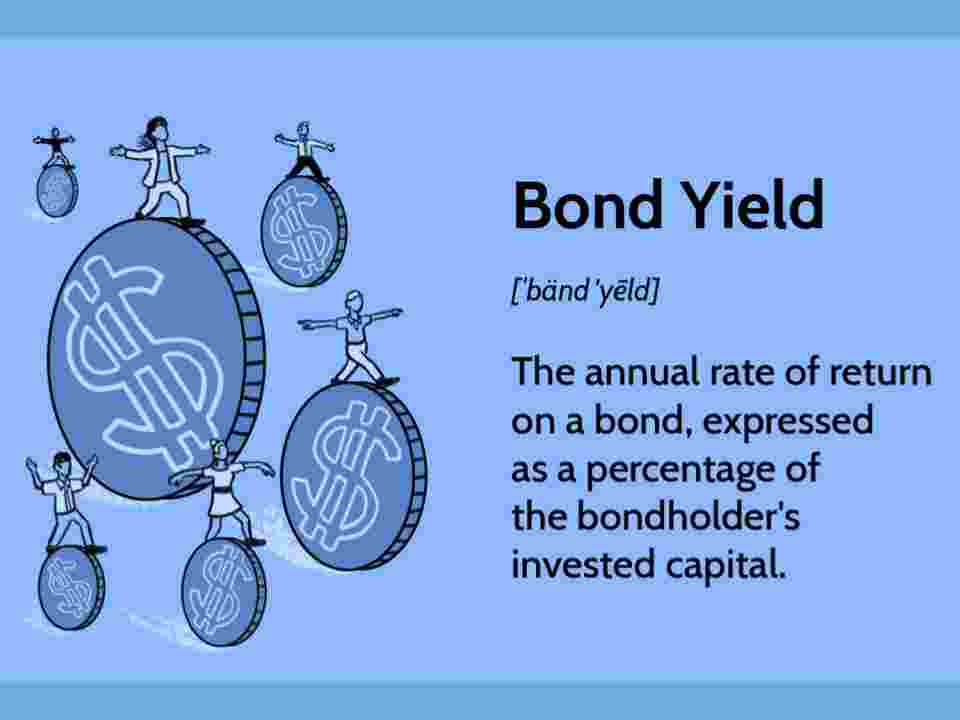Description
According to recent analysis by Bank of Baroda (BoB) Research, yields on India’s benchmark 10-year government bonds are expected to remain soft throughout July 2025. To better understand this prediction and its implications, let’s explore the fundamentals of bonds and bond yields, how they work, and what influences their movement.
Know About Bond
A bond is essentially a debt instrument. It represents a loan made by an investor to a borrower, typically a government, corporation, or other entity. In exchange for this loan, the borrower agrees to pay interest periodically and repay the principal amount (the face value of the bond) at a predetermined date in the future, known as the maturity date.
Key Characteristics of a Bond:
Issuer: The entity that borrows the money (e.g., government or corporation).
Face Value (Par Value): The amount to be repaid at maturity.
Coupon Rate: The fixed annual interest rate paid to the bondholder.
Term to Maturity: The time period from the bond’s issue date until its maturity.
Entities issue bonds to raise funds for activities such as:
Infrastructure and development projects
Business expansion
Refinancing older debt
Supporting welfare or social initiatives
About Bond Yield
A bond yield refers to the annual return an investor earns from holding a bond until maturity. It is a critical indicator of how attractive a bond investment is in relation to other financial instruments.
How is Bond Yield Calculated?
The most basic formula for bond yield is:
Bond Yield (%) = (Annual Coupon Payment / Current Market Price of the Bond) × 100
For example, if a bond has a coupon payment of ?800 per year and is currently trading at Rupees 10,000, the yield would be 8%.
Bond Prices And Yields Are Connected
One of the most important aspects of bond investing is the inverse relationship between bond prices and bond yields.
When interest rates fall:
Newly issued bonds offer lower interest rates.
Existing bonds with higher coupon payments become more attractive.
Demand increases, pushing bond prices up.
As a result, yields fall (because the same interest payment is now earned on a higher-priced bond).
When interest rates rise:
New bonds offer higher coupon rates.
Existing bonds with lower interest rates lose attractiveness.
Demand falls, causing bond prices to decline.
Consequently, yields rise.
This relationship helps investors understand the current market sentiment and interest rate expectations.
Types Of Bond Prices:
At Par: Price = Face Value
At a Discount: Price < Face Value (Usually when interest rates rise)
At a Premium: Price > Face Value (Usually when interest rates fall)
Real-World Example: 10-Year Government Bond
The 10-year benchmark government bond is often used as a key reference point for long-term interest rates in India. A decline in its yield indicates:
Lower borrowing costs for the government and businesses.
Optimism about inflation control or expectations of monetary easing by the RBI.
Increased demand for safer assets like government bonds during times of uncertainty.
Bond Yield vs. Coupon Rate
If a bond's market price rises above its face value, its yield will be lower than the coupon rate.
If the bond's price drops below its face value, the yield will be higher than the coupon rate.
This is why understanding the bond yield is crucial it reflects the true return an investor can expect, based on current market dynamics.
Conclusion
Bond yields serve as a barometer of economic sentiment, interest rate trends, and inflation expectations. As Bank of Baroda Research anticipates a soft yield trend in July 2025, it suggests that investor confidence in lower interest rates and stable inflation remains intact. For anyone interested in fixed-income investing, grasping how bond prices and yields interact is vital for making informed decisions.
Welcome to Notopedia.com, your free learning platform that caters to the diverse needs of students and aspirants across a spectrum of entrance exams and educational endeavors. Whether you're preparing for highly anticipated exams like CAT, NEET, JEE Main, or bank job vacancies, our platform offers a wealth of resources to guide you towards success. Stay up-to-date with the latest exam dates, announcements, and results for various government recruitment exams, including SSC CGL, CHSL, NDA, and UPSC. Explore comprehensive study materials, sample papers, and exam patterns to hone your skills and boost your confidence. From important dates like CBSE Class 10 and 12 date sheets to exam-specific information like JEE Main application form date, we cover it all. Notopedia.com is your go-to source for everything from admissions and admit cards to scholarships and college information. Whether you're aiming for a career in defense, government, banking, or higher education, our free learning platform equips you with the knowledge and resources you need to excel. Join us in your educational journey and unlock a world of opportunities, guidance, and comprehensive support.
For more Updates and Information - Visit Notopedia's Bulletin Board
For Latest Sarkari Jobs - Visit Notopedia's Sarkari Jobs Section
For access to more than 20,000 Colleges - Visit Notopedia's College Section
For School Studies and Exams Preparation across 14 Boards - Visit Notopedia's School Section
For Comprehensive Preparation of Sarkari Job Exams - Visit Notopedia's Sarkari Exams Section










